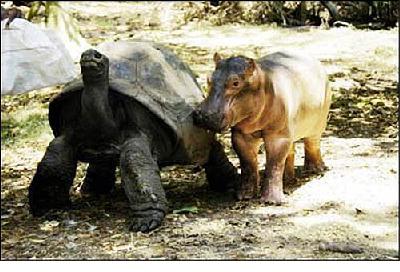
Junior Hippo Goes to School
Story and webpage by Grandpa Cliff Jan 18, 2006
(for R.J. and J.A.)

"Mom" stands tall and proud as she shows off Junior.
But that was yesterday.
Today, Junior is not being a good hippo.
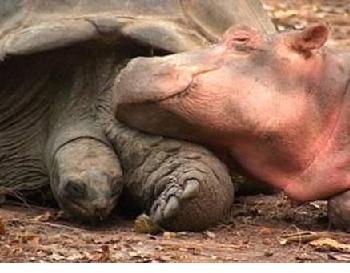
It's time to get up, Junior. Quit worrying so much about the science test.
I've been helping you prepare for it the whole weekend. You'll do alright.
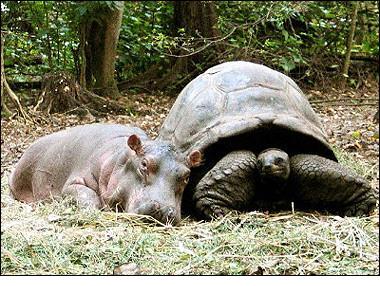
Junior, I told you to wake up!
If you won't go to school, you'll have to get a job.
You can't just lay around all day.
(after Junior arises)
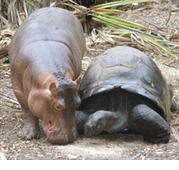
How many times have I told you not to eat your breakfast off the floor?
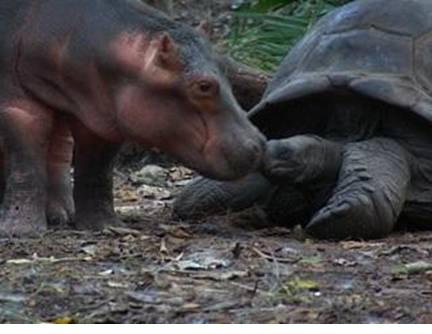
Stop crying, Junior. You're not staying home from school!
Now, give me a kiss and be on your way.

I don't care how tired you are. You have to go to school!
Not another word out of you!! I've had enough!!!
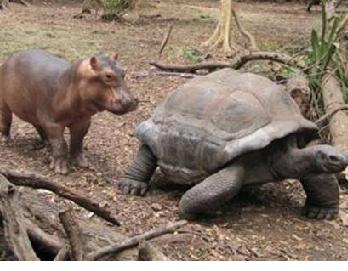
Let's go Junior. I'm going to make sure you get there.
But, Mom! I went to school last week. Why do I have to go again?
What will my classmates think if they see you leading me to school everyday?

Did you wash behind your ears this morning like I told you to?
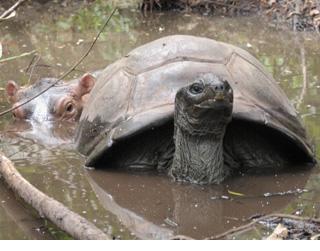
Mom, if you just walked a little faster we wouldn't have to take this shortcut.
I know, Junior, but this is the only way I know of to get water behind your ears.
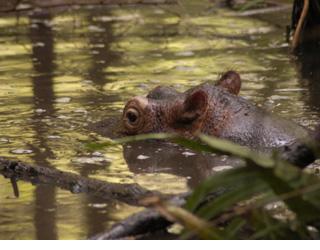
(Gurgle) I have to keep my ears above water. (Gurgle)
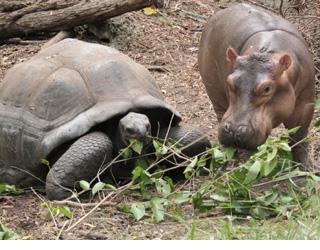
Don't just stand there. Quick!
Help me move this stuff so we can get by.
School is about ready to start!
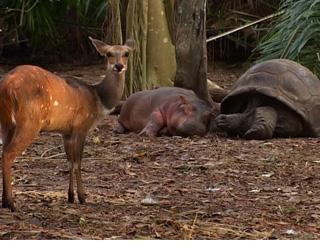
Junior, I know it was a long walk, but don't go to sleep now.
Mrs. Antelope, your teacher, is coming. You don't want her to catch you.
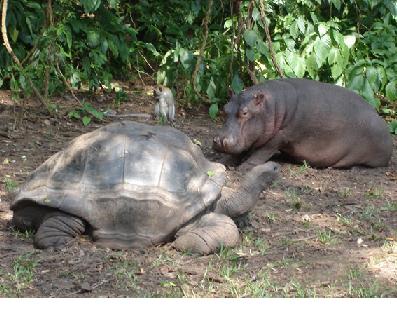
One of your classmates has arrived, so I'm going home.
Good luck on your test! Make me proud, son.
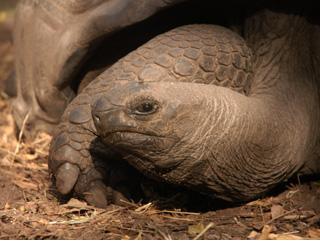
Whew!! Now for a little peace and quiet.
(Junior returns home from school)
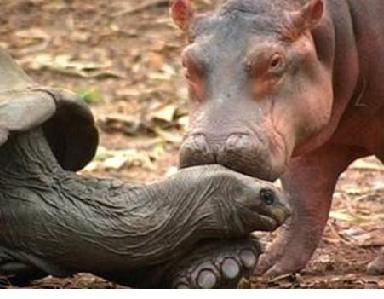
Aw, Mom..... I love you. You were right. I aced the science test.
You know... I kinda like school after all.
By the way, where are YOUR ears?
__________________________________________________________
[The answer to the last question is that tortoises don't have external ears like dogs and people. Just behind the eye you can see a round mark. That is where the skin is covering the internal ear.]
Now, the real story behind the photos above.

Kenya is a country situated at the equator. It is in eastern Africa, and borders the Indian Ocean (see map [S]). A few days before Christmas in 2005, the rains caused the flooding of the Sabaki River. The strong current swept part of a hippopotamus pod downsteam and into the ocean where they lived along the shore for a few days. [A pod is a group of related hippopotamuses]
On Dec 26, 2004, an earthquake of magnitude 9.15 occurred in the Indian Ocean. It was one of the largest and most destructive earthquakes of recorded history. It produced a huge wave of water (a tsunami) that hit the shores of many countries, and is estimated to have killed 283,000 people. The wave is said to have been 100 feet high in some places. The tsunami had to travel almost 4,000 miles before reaching Kenya's shore.
A day after the tsunami hit the shore, the only hippo seen was a 1-year old baby weighing about 650 pounds. He had gotten separated from his family and stranded on an offshore coral reef. Villagers tried to rescue him with fishing nets, but he broke through them. Some villagers went for shark nets which are much stronger. They chased the baby hippo for hours, and finally a man named Owen tackled him in shallow water. The shark nets were wrapped around him. Nearly a thousand people were watching from shore when he was dragged to the shore.
The baby hippo was then transported to a wildlife sanctuary. He was too young to be put with other hippos, because an adult male might kill him. For his safety, he was put in a different section of the sanctuary. Hippos are social animals, which means that they live in groups. With no other hippos in his surroundings, Owen (he was named after the man who tackled him) started to follow a 130-year-old male Giant Aldabran Tortoise named Mzee. Perhaps Owen picked this new friend because it was roundish and gray like members of his own family.
Baby hippos walk behind their mothers for four years. Mzee (pronounced Mih-ZAY) resisted the friendship at first, but Owen followed him everywhere nevertheless, even into the sanctuary pool. At night, Owen slept next to the tortoise. After several days, Mzee got used to Owen. They eventually became inseparable. One year later (Dec 2005), they are still very close companions.
"Conservation workers plan to introduce Owen to a 13-year-old female hippo named Cleo early next year [2006], hoping to see the two develop a strong relationship. The female hippo has lived without companionship from her species for more than a decade. The delicate process will begin with having the two animals meet and become used to each other's smell before moving them into a larger enclosure together with the tortoise." [S]
____________________________________________________________
A book for children is being written about this unlikely duo. "Owen and Mzee: the True Story of a Remarkable Friendship" is set for release in March 2006 by Scholastic company. [S]
Read a long story about Owen and Mzee (.pdf format).
More photos of Owen and Mzee.
The scientific name of the hippopotamus is Hippopotamus amphibius. That means horse (hippo) of the river (potamus) that lives both on land and in the water (amphibius). The plural of hippopotamus is both hippopotamuses and hippopotami. The hippo is a mammal.
____________________________________________________________
Visitors since 30 Dec 2006
Go to the HOME page